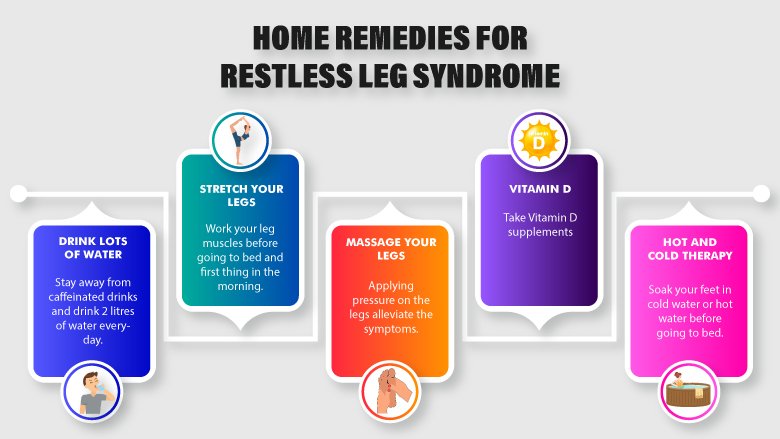Discover the surprising remedies and lifestyle changes that can finally bring relief to your restless legs syndrome symptoms.
Table of Contents
Enter the world of wiggly feelings in your legs. What is it that makes them want to dance when you’re trying to chill? We call this restless leg syndrome, and we’re going to find out what can make it better!
Have you ever felt like your legs have a mind of their own, moving and twitching when you want them to stay still? That’s what we call restless leg syndrome, a fancy way of saying your legs can’t sit still when they should. Let’s dive into what causes this and how we can help those jumpy legs calm down.
Understanding Restless Leg Syndrome
Let’s talk about what this funny-sounding condition is all about and why your legs act really silly sometimes.
What is Restless Leg Syndrome?
Restless Leg Syndrome, also known as RLS, is when your legs get a wiggly, tingly, or jumpy feeling that makes you want to move them. It’s like having tiny ants crawling under your skin, and the only way to make them stop is to shake or kick your legs. Imagine trying to relax and watch your favorite show, but your legs just won’t chill out!
Why Do Legs Get Restless?
Your legs aren’t just being annoying for no reason. Sometimes, RLS can happen because of not having enough iron in your body or even from certain health conditions like kidney disease or Parkinson’s disease. So, if your legs are throwing a party when you’re trying to sleep or relax, it might be because they need a little extra attention and care.
Nutrition and Your Nervous Legs
Do you know that what you eat can play a big role in calming down those jumpy legs? Let’s dive into how special minerals like magnesium and iron can make a difference in easing the restlessness in your legs.
Magnesium’s Magic
Have you ever heard of magnesium? It might sound like a big, fancy word, but it’s actually a mineral that can be like a superhero for stopping the shakiness in your legs. Magnesium helps your muscles relax, and when your legs are feeling all wiggly, this mineral can step in to calm them down. You can find magnesium in foods like nuts, seeds, bananas, and leafy greens. So next time your legs start dancing, snack on some magnesium-rich foods and see if it helps!
Iron to the Rescue
Iron isn’t just for making your muscles strong; it can also keep your legs calm and happy. When your body is low on iron, it can lead to restless leg syndrome, making your legs feel like they’re doing a bouncy dance routine. Eating foods like lean meats, beans, and fortified cereals can help boost your iron levels and might just be the key to settling down those restless legs. So make sure to add these iron-rich foods to your plate and say goodbye to the leg jitters!
When Sleep is Sneaky: Sleep Apnea
Have you ever heard of sleep apnea? It’s like a bedtime ninja that can sneak into your room and disrupt your peaceful slumber. But did you know that it can also cause your legs to throw a nighttime party of their own? Let’s discover how this sneaky condition can lead to restless legs when you’re trying to catch some Zzz’s.

Image courtesy of www.novomedshop.com via Google Images
What’s Sleep Apnea?
Sleep apnea is a condition where your breathing pauses or becomes shallow while you’re asleep. It can happen multiple times during the night, causing disruptions in your sleep pattern. When you don’t get enough quality rest, it can leave your body feeling tired and your legs feeling restless.
Can Fixing Sleep Apnea Calm Your Legs?
When you address and manage sleep apnea effectively, you can improve the quality of your sleep. And guess what? Better sleep can mean calmer legs! So, by taking steps to treat sleep apnea, like using a CPAP machine or making lifestyle changes, you may find that your legs are less likely to join the midnight dance party.
Other Health Culprits
Hey there! Did you know that those bean-shaped buddies of yours, we call kidneys, can sometimes lead to restless legs? Yep, it’s true! These sneaky organs, responsible for filtering waste from your blood, can sometimes misbehave and cause all sorts of troubles, including making your legs want to boogie all the time!
Parkinson’s Disease and Legs
Hey, kids! Let’s talk about a serious condition called Parkinson’s disease. It’s a problem that affects how your brain works, and it can also invite restless legs to the dance floor. People with Parkinson’s might notice their legs feeling extra jittery and fidgety, along with other symptoms. It’s like they’ve got their own little leg party going on!
Exercise: Jiggling Those Jelly Legs
When your legs feel like they have a mind of their own, it’s time to get moving and calm those wiggly sensations down. Let’s explore how exercise can be the secret weapon to stop your legs from jiggling uncontrollably.

Image courtesy of www.icliniq.com via Google Images
Why Exercise Helps
Think of exercise as a superhero cape for your legs. When you move, you’re sending signals to your brain to focus on the intentional movements you’re making. This can help drown out the erratic signals causing your legs to feel restless. It’s like giving your legs a new job to focus on!
What Type of Exercise is Best?
Not all exercises are created equal when it comes to calming jittery legs. While any movement is better than none, some activities may be more effective at soothing restless legs. Activities like walking, swimming, yoga, and dancing can all be great choices. The key is to find what you enjoy and what makes your legs feel less restless.
Warm Water to the Rescue
Ever thought that warm water could be the secret ingredient to calming down your restless legs? Let’s dive into this soothing solution.
Bath Time for Legs
Imagine stepping into a nice, warm bath just before bedtime. The gentle ripples of the water and the cozy temperature can work wonders for those jumpy legs. It’s like giving them a little spa treatment to relax all those twitchy muscles.
Why Warmth Works Wonders
Warm water isn’t just about feeling good – it actually helps your legs chill out. The heat can increase circulation, relax tense muscles, and send calming signals to your brain. So, next time you feel like your legs want to break out in a dance routine, try soaking them in some warm water and feel the soothing effects.
| Treatment Options | Effectiveness |
|---|---|
| Regular exercise | High |
| Hot or cold packs | Medium |
| Massage therapy | Medium |
| Stretching exercises | High |
| Iron supplements | High (for iron deficiency) |
Relaxation Techniques
Chillaxing doesn’t just feel good, it might make your restless legs take a breather too.

Image courtesy of www.amazon.com · In stock via Google Images
Breathing to Beat the Buzz
Breathing is for more than blowing bubblegum bubbles – learn how to do it the chill-out way! Close your eyes, take a slow deep breath in through your nose, and then slowly exhale through your mouth. Repeat this a few times to calm your wiggly legs down.
Meditate, Don’t Accelerate
Meditation isn’t just fancy sitting. Find out how it’s like a ‘stop running’ sign for your legs. Sit quietly, focus on your breath, and try to imagine a peaceful place in your mind. Let go of any tension in your body, including your legs, and just be in the moment. This can help calm the restlessness in your legs.
Professional Help and You
When you’ve tried all the tricks, and your legs still feel like they’re on a trampoline, it might be time to tag in a doctor.
When to See a Doctor
Understanding when your legs go from a little restless to, ‘Hey, we need some help over here!’ is super important. If your legs are keeping you up at night or making it hard to sit still during the day, it’s a good idea to talk to a doctor. They’re like the experts in figuring out how to help those legs do the calm-down dance.
What Can Doctors Do?
Peek into a doctor’s toolbox to see what cool gizmos and gadgets they might use to calm your quirky quads. Doctors can check if there are any vitamin or mineral imbalances that are making your legs restless, or they might look into other health conditions that could be causing the leg party. You may need to do some special tests to help figure out what’s going on, so don’t be shy about asking questions and letting the doctor know how those legs are acting up.
Summary and Top Tips
Now that we’ve explored the world of wiggly legs and discovered how to calm them down, let’s recap the top tips for easing restless legs.

Image courtesy of www.sleepbo.com via Google Images
1. Stay Super with Magnesium
Make sure to include magnesium-rich foods in your diet like bananas, nuts, and leafy greens to help keep those restless legs at bay.
2. Iron Out the Problems
Don’t forget about iron! Foods like beans, lean meats, and fortified cereals can help prevent iron deficiency and keep your legs calm.
3. Catch Some Quality Zzz’s
Getting a good night’s sleep is essential for calming restless legs, so make sure to create a relaxing bedtime routine to help improve your sleep quality.
4. Keep an Eye on Your Health
Remember that kidney disease and Parkinson’s disease can also contribute to restless legs, so it’s important to stay on top of your overall health and address any underlying conditions.
5. Stay Active for Serene Legs
Regular exercise can work wonders for calming restless legs, so find activities you enjoy and make them a part of your daily routine to keep your legs happy and healthy.
6. Embrace Warmth and Relaxation
Taking a warm bath before bed or practicing relaxation techniques like deep breathing and meditation can help soothe your restless legs and encourage relaxation.
By incorporating these tips into your daily routine and staying mindful of your overall health, you can help ease the symptoms of restless leg syndrome and enjoy a more peaceful night’s sleep.
FAQs
What is the number one thing that helps restless legs?
When it comes to easing those dancing legs, there are a few key players that can make a big difference. Making sure you have enough magnesium and iron in your diet is like giving your legs a superhero team to keep them calm and collected.
Can kids get restless leg syndrome too?
Believe it or not, restless leg syndrome isn’t just for grown-ups. Kids can definitely experience those wiggly feelings in their legs too! It might be because of low iron levels or even just a knack for having too much energy bouncing around inside. But don’t worry, there are ways to help calm those legs down so you can rest easy.





